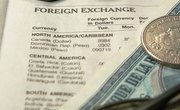
Major purchases such as cars and homes can be difficult to make without getting a loan, unless you've saved up cash for years. Whenever you buy something with a loan or credit -- whether it's a large purchase or a small one -- you have to pay interest on the debt until you pay it off. The interest rates that lenders charge can have a significant influence on the level of consumer demand in the economy and on economic growth.
Tips
As a rule of thumb, when interest rates are high, some loans become too costly and borrower demand may lessen, which reduces the total consumption of loans. Conversely, when interest rates drop, consumers take advantage of the lower loan rates, which increases demand for loan products.
Interest Rates and Demand
Customer or consumer demand refers to the total amount of stuff that people want to buy. Low interest rates make it cheaper to borrow money, which in turn makes it less expensive to buy anything from an education to electronics. As a result, consumer demand tends to increase as interest rates fall. If interest rates are high, borrowing is costly, which is likely to reduce demand and total consumption.
Interest Rates and Investment
If you have extra cash lying around, saving or investing it can bring a return over time. Interest rates are an important consideration when deciding whether to save cash in a bank account that pays interest or to put it into investments that might appreciate but don't pay interest, such as stocks. In general, low interest rates encourage investment because they make saving less rewarding, while high interest rates tend to discourage investment. Low interest rates also make it cheaper for businesses to take out loans and invest in new projects.
Economic Growth
Consumer demand and investments are key factors in determining the economy's overall health and growth rate. High levels of demand and consumption tend to increase companies' profits, allowing them to hire more workers and pay them more. Therefore, low interest rates can help spur economic growth and reduce unemployment, while high interest rates can slow growth.
Monetary Policy
The importance of interest rates on consumer demand and the economy in general is a key concern for government economists. The U.S. Federal Reserve Board influences interest rates by altering the federal funds rate, which is the interest rates banks charge one another for short-term loans. When the economy is not doing well, the government can reduce the federal funds rate in an attempt to spark consumer spending, investment and growth. This tends to reduce interest rates in the economy as a whole.
References
- U.S. Federal Reserve: Open Market Operations
- AFFECT | definition in the Cambridge English Dictionary
- Board of Governors of the Federal Reserve System. "Open Market Operations." Accessed Jan. 12, 2020.
- Federal Reserve Bank of New York. "Federal Funds and Interest on Reserves." Accessed Jan. 12, 2020.
- Board of Governors of the Federal Reserve System. "Monetary Policy Tools." Accessed Jan. 12, 2020.
- Office of Financial Research. "LIBOR Alternatives Under Development." Accessed Jan. 12, 2020.
- Securities and Exchange Commission. "Staff Statement on LIBOR Transition." Accessed Jan. 12, 2020.
- Board of Governors of the Federal Reserve System. "FAQs: What Is the Prime Rate, and Does the Federal Reserve Set the Prime Rate?" Accessed Jan. 12, 2020.
- Federal Reserve Bank of San Francisco. "How Does Monetary Policy Affect the U.S. Economy?" Accessed Jan. 12, 2020.
- Board of Governors of the Federal Reserve System. "Federal Open Market Committee." Accessed Jan. 12, 2020.
- Congressional Research Service. "Monetary Policy and the Federal Reserve: Current Policy and Conditions," Page 11. Accessed Jan. 12, 2020.
- Consumer Financial Protection Bureau. "Understand Loan Options." Accessed Jan. 12, 2020.
- George Mason University School of Law. "Introduction and Overview of Consumer Credit: Development, Uses, Kinds, and Policy Issues," Page 15. Accessed Jan. 12, 2020.
- United States Department of the Treasury. "Daily Treasury Yield Curve Rates." Accessed Jan. 12, 2020.
- TreasuryDirect. "Treasury Bonds: Rates & Terms." Accessed Jan. 12, 2020.
- Board of Governors of the Federal Reserve System. "The Challenges Facing Subprime Mortgage Borrowers." Accessed Jan. 12, 2020.
- United States Department of Labor Bureau of Labor Statistics. "The U.S. Housing Bubble and Bust: Impacts on Employment," Page 7. Accessed Jan. 12, 2020.
- The Wharton School of the University of Pennsylvania. "Victimizing the Borrowers: Predatory Lending’s Role in the Subprime Mortgage Crisis." Accessed Jan. 12, 2020.
- Consumer Financial Protection Bureau. "What Is Negative Amortization?" Accessed Jan. 12, 2020.
- Bureau of Consumer Financial Protection. "Consumer Credit Cards Market Report," Pages 59-60. Accessed Jan. 12, 2020.
- United States Department of Labor Bureau of Labor Statistics. "Consumer Price Index Frequently Asked Questions." Accessed Jan. 12, 2020.
- Federal Reserve Board. "House Prices and Monetary Policy: A Cross-Country Study." Accessed Jan. 12, 2020.
- Obama White House Archives. "Back to a Better Normal: Unemployment and Growth in the Wake of the Great Recession," Page 7. Accessed Jan. 12, 2020.
Writer Bio
Gregory Hamel has been a writer since September 2008 and has also authored three novels. He has a Bachelor of Arts in economics from St. Olaf College. Hamel maintains a blog focused on massive open online courses and computer programming.

